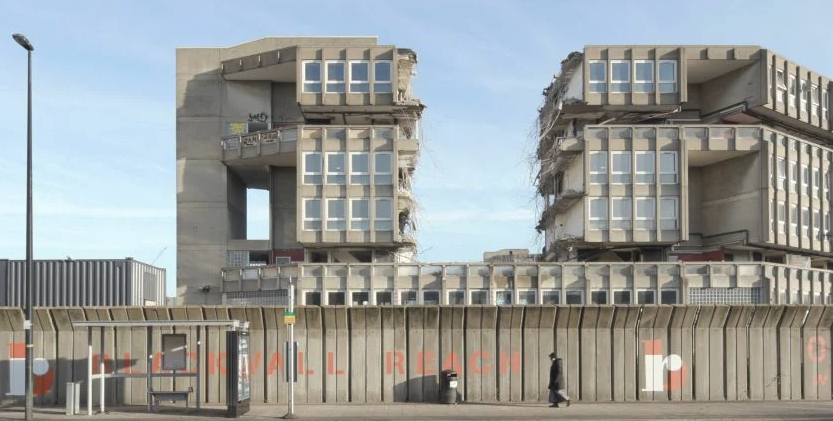Are you now, or have you ever been, a Victorian nostalgist? The charge is made in a recent Guardian article lamenting the thoughtless destruction of post-war Brutalist masterpieces. Apparently we are seeing a wave of demolitions of such buildings, cheered on by an unholy alliance of unscrupulous developers and the aforementioned nineteenth century-loving reactionaries who write to local newspapers to grumble about modern architecture.
It would take a heart of concrete not to laugh. How the wheel of fortune turns — sixty or seventy years ago, when the madness that took hold of town planners and architects in the mid-twentieth century was at its height, the shoe was on the other foot. It was the Brutalists and their fellow travellers, intoxicated by theory and ideology, who were the wreckers. Numerous British cities had their historic hearts totally destroyed. Centuries of modest, organic, human-scale development were obliterated and the wisdom of ages disregarded.
The list of lost treasures goes on and on. The finely-proportioned Sunderland Town Hall, finished in 1890 at the height of Britain’s nineteenth century prosperity, was demolished with indecent haste in 1971 (its entirely unremarkable successor has already outlived its usefulness and may face the wrecking ball itself before too long). Newcastle’s superb neo-classical Royal Arcade went in 1963, to be replaced by a motorway and a dull office block. The Attlee government refused to repair bomb damage to Liverpool’s Custom House and knocked down the whole thing in the late 1940s. The same city’s Cotton Exchange was ruined by modernist additions, while in Coventry — as in many other places — a city centre with fine old buildings was more or less totally flattened to make way for car parks, a shopping mall and a ring road. Old Euston station, with its magnificent pillared entrance hall, made way for new Euston, an uninspiring and doggedly functional terminus with no romance or playfulness.
In light of this litany of cultural disaster, there is a certain poetic justice in the current campaign of destruction being waged against modernist landmarks. I am not an architectural reactionary, despite my fondness for Victorian neo-Gothic with all the trimmings. I love interwar modernism, especially art deco and the International style, and what UnHerd’s Aris Roussinos calls “Anglomodernism” — the attempt to put a vernacular spin on the new forms of building and design that emerged in the twenties and thirties, which can be seen in a lot of English housebuilding in the years since the Second World War. There are even Brutalist buildings that work well in particular contexts, like Dunelm House in Durham.
However, certainly as far as big public buildings are concerned, the overwhelming architectural legacy of the years since 1945 is one of failure. Far too many large projects are distinguished only by an arrogant grandiosity, foolishly dismissive of past forms and the normal, reasonable preference of ordinary people for pleasant, neighbourly design. I have never forgotten a new building I encountered in Coventry, adjoining a public square, which presented to passing pedestrians absolutely nothing except a high blank dark wall. There was no charm to it, no attempt at harmony or playfulness. It was effectively a gigantic middle finger to the street, in a way that felt almost vindictive.
So no, I won’t mourn the disappearance of such monstrosities from our towns and cities. I just hope the theorists and the ideologues learn something this time round.











Join the discussion
Join like minded readers that support our journalism by becoming a paid subscriber
To join the discussion in the comments, become a paid subscriber.
Join like minded readers that support our journalism, read unlimited articles and enjoy other subscriber-only benefits.
Subscribe